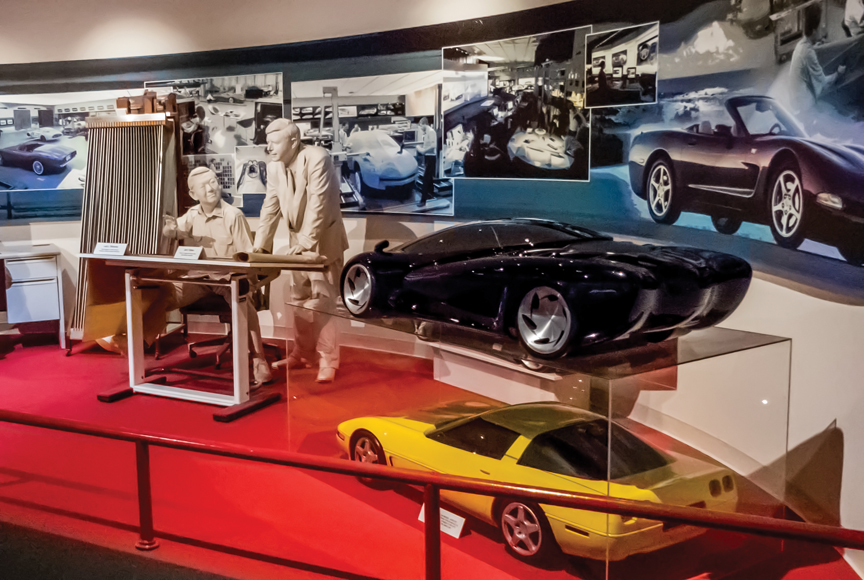
Arlington and Bowling Green, Ky.,
have something in common. After General Motors came to both towns, everything changed. Interestingly, at about the same time that the first Corvette rolled off the assembly line in 1953, a Pontiac Chieftain was being built to become the first vehicle produced out of the new GM plant in Arlington.
Uncertain of the potential of a two-seater sports car, the big car company built only 300 of the Vettes that year as an experiment from the back of the company’s customer delivery garage in Flint, Mich. – all of them white with red interiors.

Then, recognizing the potential after enthusiastic response from customers, GM moved production to its plant in St. Louis, where it remained until 1981.
That’s the year the Bowling Green plant opened,
and its host city gained national recognition as the only place in the country where the iconic “Great American Sports Car” is built.
In 1994, the National Corvette Museum made its debut just across the highway from the plant and now welcomes more than a quarter million visitors every year.
Last month, I got to spend a couple of days there pretending to be part of my son’s film crew that is doing a television series about the world’s premier car museums.

For Corvette enthusiasts,
there’s no other place like it. Everyone you see there is full of excitement to be spending the day among the collection of amazing Vettes that more than fulfill expectations.
But none of the visitors are more thrilled than the ones who show up every day to take delivery of their awesome new sports car from factory experts.
Arrangements to do that are made through local dealers, and a number of Arlington Corvette owners have reported the experience is well worth the extra charge associated with the privilege.
These patient delivery specialists will spend as many hours as you like explaining every detail about the vehicle that has produced its singular reputation among all the automobiles in the world.
When the presentation is finished, proud new owners drive off in a celebration that features visitors and museum staff standing and applauding as the new Corvette owners exit the gallery concourse and head for the open road. For other visitors, their most immediate destination is the place in the museum where catastrophe occurred.

It’s called the Cave In Exhibit because that’s what happened
on Feb. 12, 2014 when a 30-foot sinkhole collapsed inside the Skydome of the museum and swallowed eight of the museum’s more important vehicles.
On the two-year anniversary of the event, the new exhibit was opened to explore what happened – and what made international headlines.
“Some tears were shed,” is how Museum Executive Director Wendell Strode described the news of the Corvettes falling victim to the sinkhole. The exhibit provides photos, videos and facts on each of the cars, as well as an interactive “before” model of each car.
Two of the Corvettes were restored;
the other six were beyond repair and have been put back on display precisely where they stood on the day of the calamity. Viewing the mangled casualties “up close and personal” results in a very predictable look on the faces of visitors – wide eyes, open mouths, and words of utter incredulity.Then, it’s on to the other exhibits. Turn around and you see the array of the cars built for the track and driven in the Indy Racing League.

Around the corner you will find anniversary and special edition Corvettes. Coming up in the fall is the gone – but not forgotten – GM models of vehicles that were produced for a limited time, and that are no longer manufactured.
Throughout the facility visitors are introduced to the evolution of all seven generations of the Corvette in settings true to the time period each helped to define.
Displays include life-size figures of designers,
modelers and assembly line workers pursuing a labor of love in their roles as specialists producing not only the famous car but also part of the country’s history in fulfilling the “American Love Affair” with the automobile.
The museum staff can also arrange a tour of the Bowling Green Plant, where visitors can watch the skills of human auto workers and their robotic counterparts as they team to build the world’s longest-running, continuously produced passenger car.
But, please note this: You need to plan ahead, as the tours are based on availability and sell out quickly.
A visit to the museum’s web site, corvettemuseum.org, will help you find all the details.
















